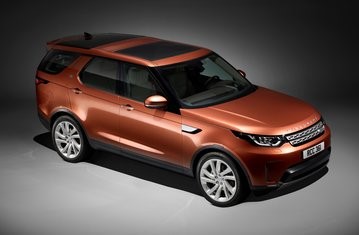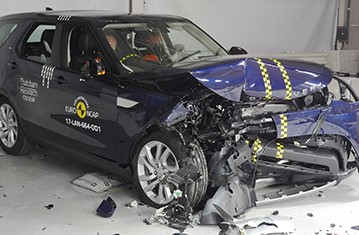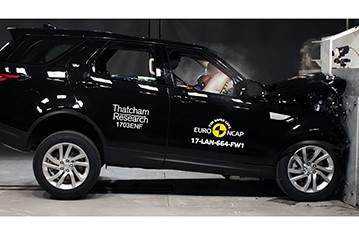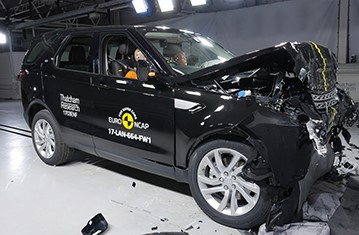- With standard equipment
- With safety pack
Find more information in the General Comments section of the assessment
Find more information in the Rating Validity tab of the assessment
- See More
- See More
- See More
- See More
- Good
- Adequate
- Marginal
- Weak
- Poor
 Passenger
Passenger
 Driver
Driver
 Rear Passenger
Rear Passenger
 Driver
Driver
 Car
Car
 Pole
Pole
 Rear Seat
Rear Seat
 Front Seat
Front Seat
- Good
- Adequate
- Marginal
- Weak
- Poor


Passenger
outboard
center
outboard *
Fitted to the vehicle as standard
Not fitted to the test vehicle but available as option
Not Available
-
i-Size CRS
-
ISOFIX CRS
-
Universal Belted CRS
Easy
Difficult
Safety critical
Not allowed
| Seat Position | ||||||
|---|---|---|---|---|---|---|
| Front | 2nd row | 3rd row | ||||
| Passenger | Left | center | Right | Left | Right | |
| Maxi Cosi 2way Pearl & 2wayFix (rearward) (iSize) | ||||||
| Maxi Cosi 2way Pearl & 2wayFix (forward) (iSize) | ||||||
| BeSafe iZi Kid X2 i-Size (iSize) | ||||||
| Maxi Cosi Cabriofix & FamilyFix (ISOFIX) | ||||||
| BeSafe iZi Kid X4 ISOfix (ISOFIX) | ||||||
| Britax Römer Duo Plus (ISOFIX) | ||||||
| Britax Römer KidFix XP (ISOFIX) | ||||||
| Maxi Cosi Cabriofix (Belt) | ||||||
| Maxi Cosi Cabriofix & EasyBase2 (Belt) | ||||||
| Britax Römer King II LS (Belt) | ||||||
| Britax Römer KidFix XP (Belt) | ||||||
Easy
Difficult
Safety critical
Not allowed
In the frontal offset test, protection of the neck of the 10 year dummy was rated as marginal, as was that of the chest of the 6 year dummy. Otherwise, protection was good or adequate. In the side barrier test, protection of both dummies was rated as good and maximum points were scored. The front passenger airbag can be disabled to allow a rearward-facing child restraint to be used in that seating position. Clear information is provided to the driver and the system was rewarded. Most of the restraint types for which the Discovery is designed could be properly installed and accommodated in the vehicle.
- Good
- Adequate
- Marginal
- Weak
- Poor

Head Impact 15.5 Pts
Pelvis Impact 4.1 Pts
Leg Impact 6.0 Pts
| System Name | Autonomous Emergency Braking | ||
| Type | Auto-Brake with Forward Collision Warning | ||
| Operational From | 10 km/h | ||
| Additional Information | Defaults on for every journey; operates above 40km/h and in low ambient light | ||
| PERFORMANCE | | |||
| Autobrake Function | |||
| Avoidance | Mitigation | ||
|
Running Adult crossing from Farside
|
Collision avoided up to 40 km/h | Impact mitigated up to 60 km/h | |
|
Walking Adult crossing from Nearside -25%
|
Collision avoided up to 40 km/h | Impact mitigated up to 60 km/h | |
|
Walking Adult crossing from Nearside -75%
|
Collision avoided up to 40 km/h | Impact mitigated up to 60 km/h | |
|
Running Child from behind parked vehicles
|
Collision avoided up to 40 km/h | Impact mitigated up to 60 km/h | |
The protection provided to the head of a struck pedestrian was good or adequate at most test locations, with some poor results recorded along the front edge of the bonnet. The protection offered by pedestrians' legs by the bumper was good and maximum points were scored. Protection of the pelvis was mixed, with some good and some poor areas. The autonomous emergency braking system scored maximum points in Euro NCAP's tests of its pedestrian protection, with complete avoidance of the target up to 40km/h and adequate speed mitigation thereafter.
- Good
- Adequate
- Marginal
- Weak
- Poor
| System Name | Adaptive Speed Limiter |
| Speed Limit Information Function | N/A |
| Warning Function | Manually set |
| Speed Limitation Function | Manually set (accurate to 5km/h) |
| Applies To | All seats | ||
| Warning | Driver Seat | Front Passenger(s) | Rear Passenger(s) |
| Visual | |||
| Audible | |||
|
|||
| System Name | Lane Keeping Aid |
| Type | Lane Departure Warning |
| Operational From | 50 km/h |
| Performance | |
|
LDW Confirmation Test
|
Pass |
| System Name | Autonomous Emergency Braking | |||
| Type | Forward Collision Warning with Auto-Brake | |||
| Operational From | 5 km/h | |||
| Additional Information | Default On; Supplementary Warning | |||
| Performance | | ||||
| Autobrake Function Only | Driver reacts to warning | |||
| Operational Speed | 5-85 km/h | 30-85 km/h | ||
| Approaching a stationary car | See AEB City | Crash avoided up to 50km/h.Crash speed reduced up to 80km/h. | ||
| Approaching a slower moving car | Crash avoided up to 60km/h.Crash speed reduced up to 70km/h. | Crash avoided up to 75km/h.Crash speed reduced up to 80km/h. | ||
| Following a car at short distance | ||||
| Car in front brakes gently | Mitigation | Avoidance | ||
| Car in front brakes harshly | Mitigation | Mitigation | ||
| Following a car at long distance | ||||
| Car in front brakes gently | Mitigation | Mitigation | ||
| Car in front brakes harshly | Mitigation | Avoidance | ||
Tests of the autonomous emergency braking system performed well in tests of its functionality at highway speeds. A lane departure warning system is fitted as standard equipment, as is a driver-set speed limiter. A seatbelt reminder is standard equipment on all seating positions including, if fitted, the optional third row seats.
- Specifications
- Safety Equipment
- Videos
- Rating Validity
Specifications
Tested Model Land Rover Discovery, 2.0 diesel HSE, RHD
Body Type - 5 door SUV
Year Of Publication 2017
Kerb Weight 2390kg
VIN From Which Rating Applies - all Discoverys
Class Large SUV
Safety Equipment
Note: Other equipment may be available on the vehicle but was not considered in the test year.
Fitted to the vehicle as standard
Fitted to the vehicle as part of the safety pack
Not fitted to the test vehicle but available as option or as part of the safety pack
Not available
Not applicable
Videos
Rating Validity
Variants of Model Range
| Body Type | Engine and Transmission | Drivetrain | Rating Applies | |
|---|---|---|---|---|
| LHD | RHD | |||
| 5 door SUV, 5 or 7 seat | 2.0 diesel I4 (180PS or 240PS), 8 speed auto with single/double transfer box | 4 x 4 |
 |
 |
| 5 door SUV, 5 or 7 seat | 3.0 diesel V6, 8 speed auto with single/double transfer box | 4 x 4 |
 |
 |
| 5 door SUV, 5 or 7 seat | 3.0 petrol V6, 8 speed auto with single/double transfer box | 4 x 4 |
 |
 |
| 5 door SUV, 5 or 7 seat | 3.0 diesel I6, 8 speed auto with single/double transfer box | 4 x 4 |
 |
 |
| 5 door SUV, 5 or 7 seat | 3.0 petrol I6, 8 speed auto with single/double transfer box | 4 x 4 |
 |
 |
* Tested variant






Find more information in the General Comments section of the assessment
 Share
Share











The passenger compartment of the Discovery remained stable in the frontal offset test. Dummy readings indicated good protection of the knees and femurs for both the driver and passenger. Land Rover showed that a similar level of protection would be provided to occupants of different sizes and to those sat in different positions. There was insufficient pressure in the driver's airbag to prevent the head from 'bottoming out' against the steering wheel, and the car was penalised for this. In the full-width rigid barrier test, protection of the driver was good apart from the chest, protection of which was adequate. Readings of chest compression in the rear passenger dummy indicated marginal protection for this body area, with good protection of all others. Dummy readings indicated good protection of all critical body regions in both the side barrier test and the more severe side pole impact. However, in the barrier test, the driver's door became unlatched and the car was penalised. Tests on the front seats and head restraints demonstrated good protection against whiplash injury in the event of a rear-end collision. However, a geometric assessment of the rear seats indicated poor whiplash protection. The Discovery has, as standard, an autonomous emergency braking system. In tests of its low-speed functionality, the system performed well with impacts avoided up to 35km/h and the impact speed reduced up to 50km/h.